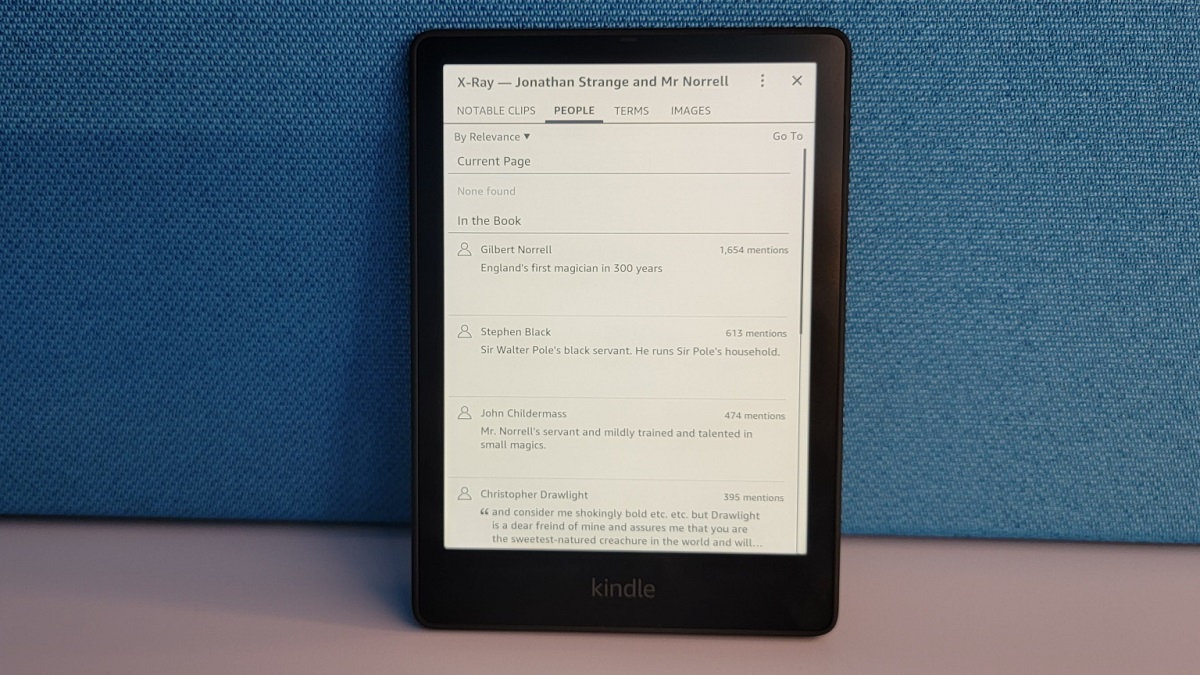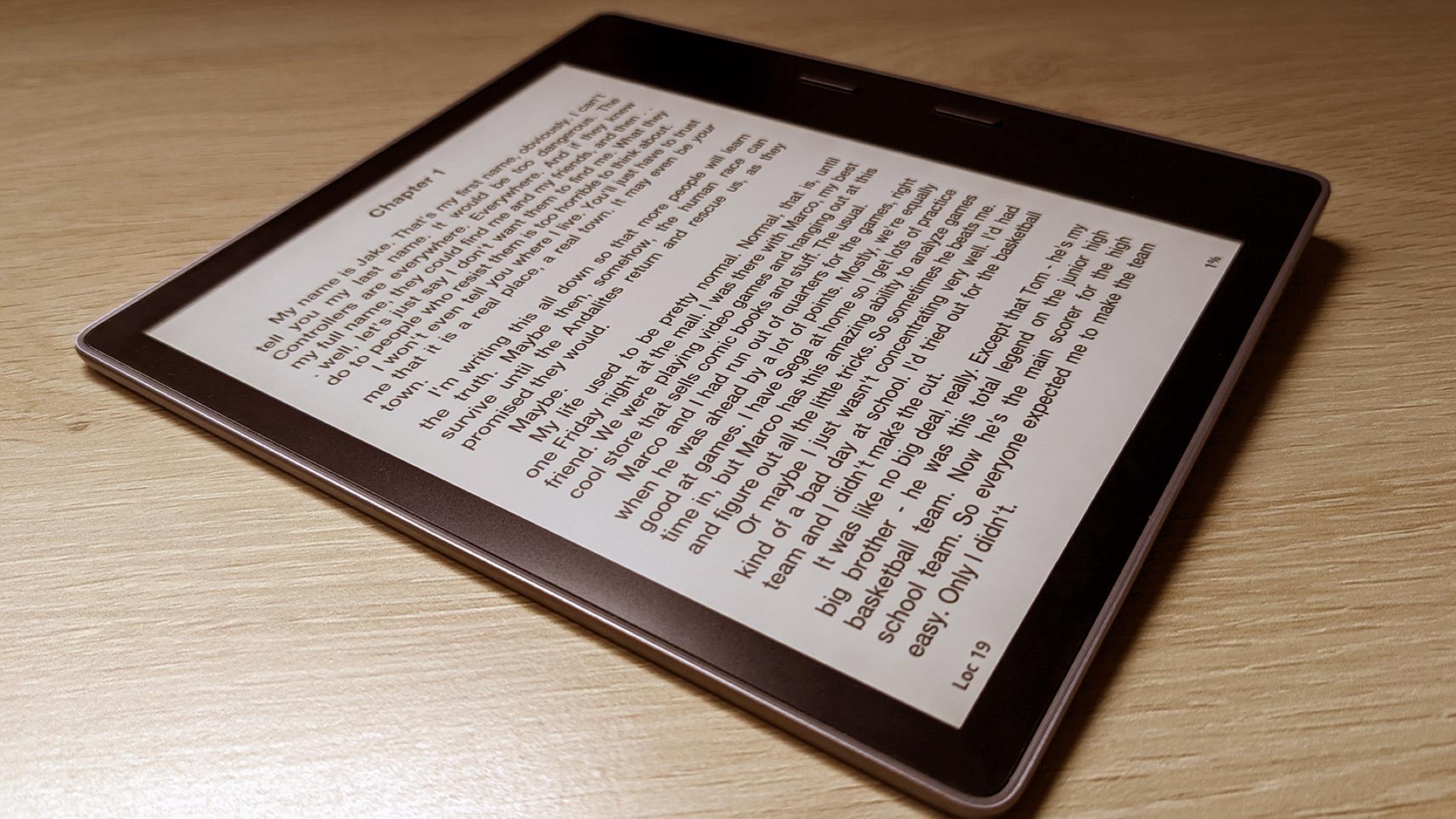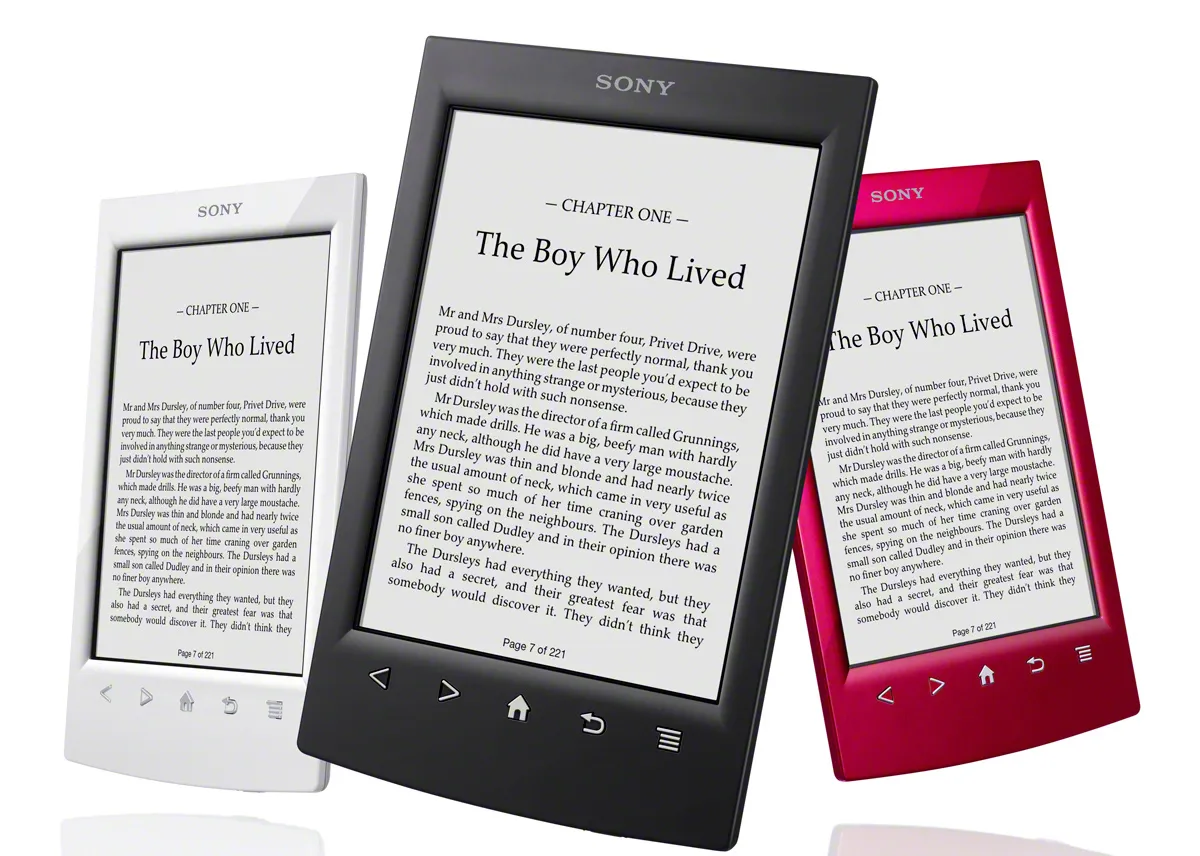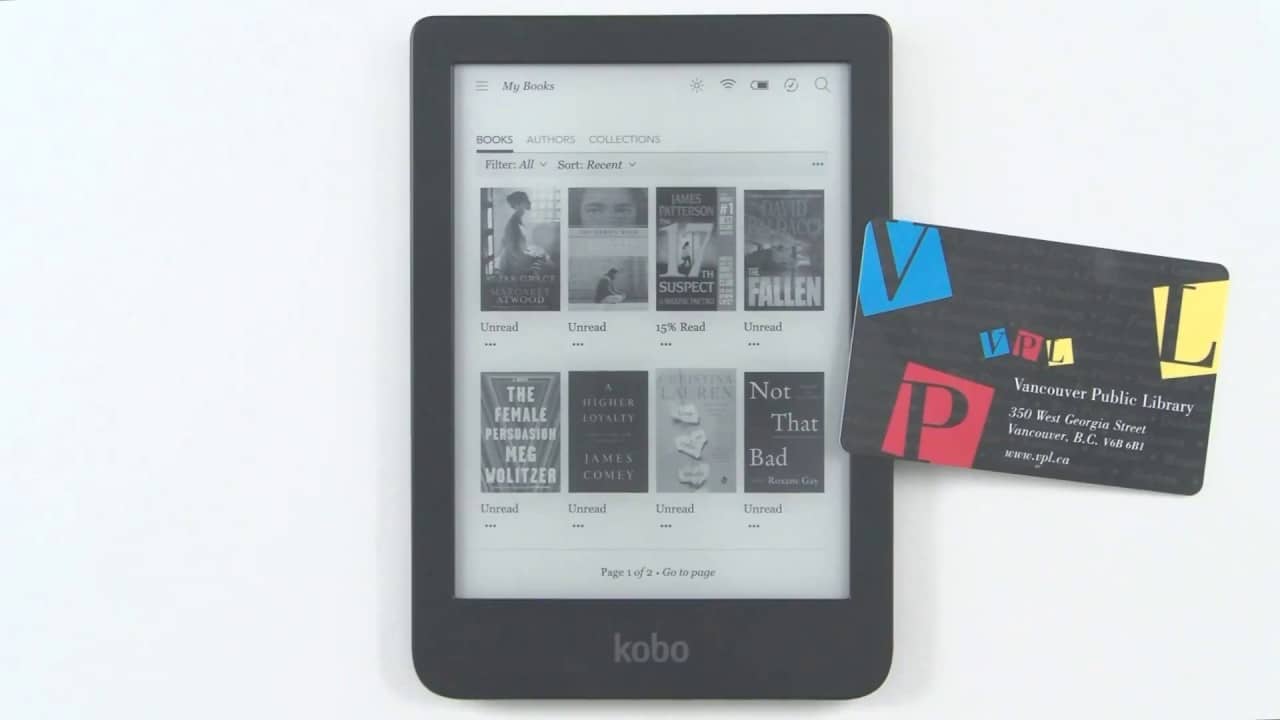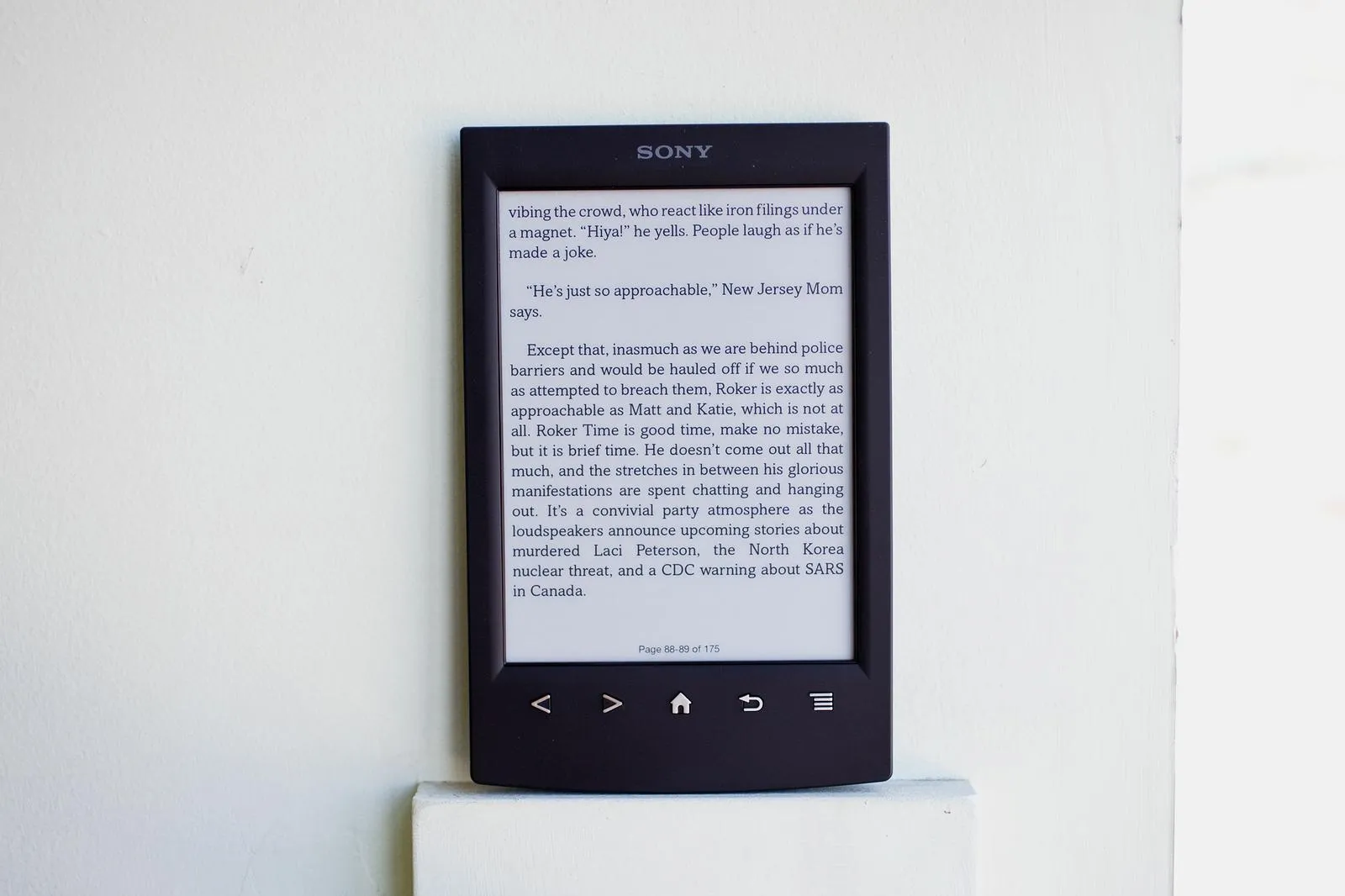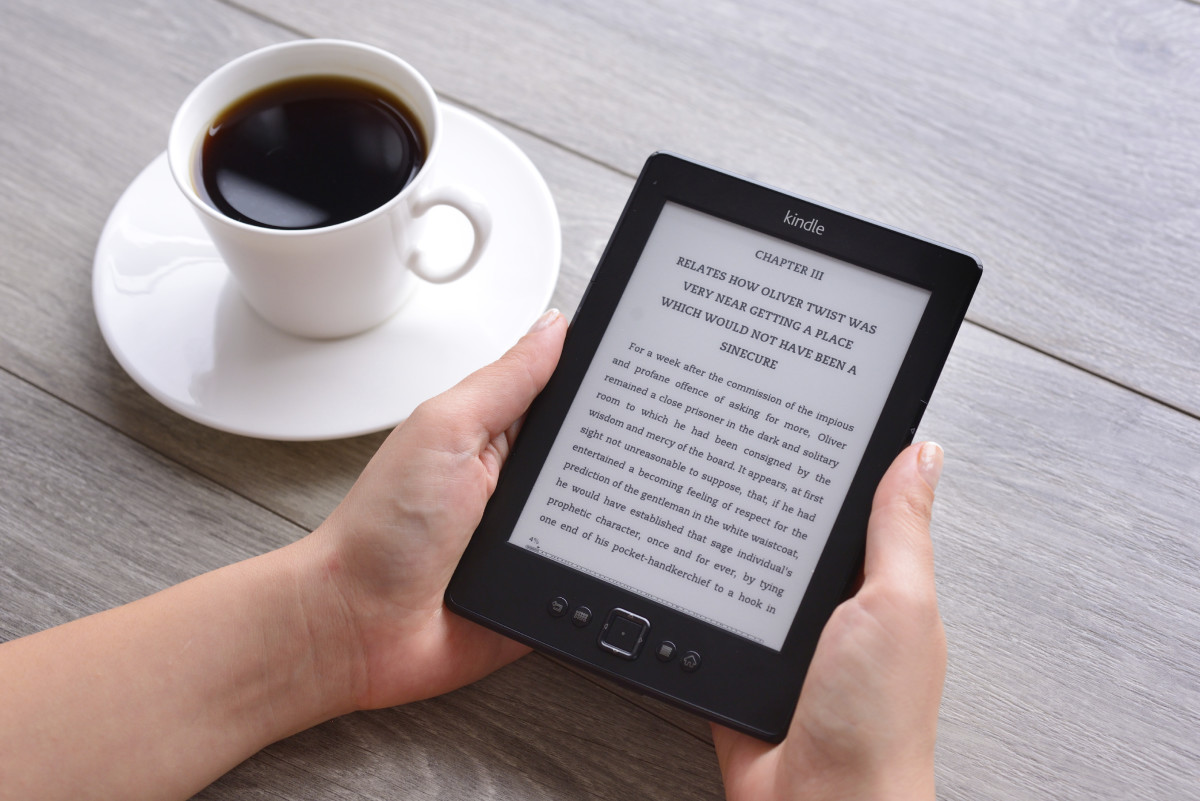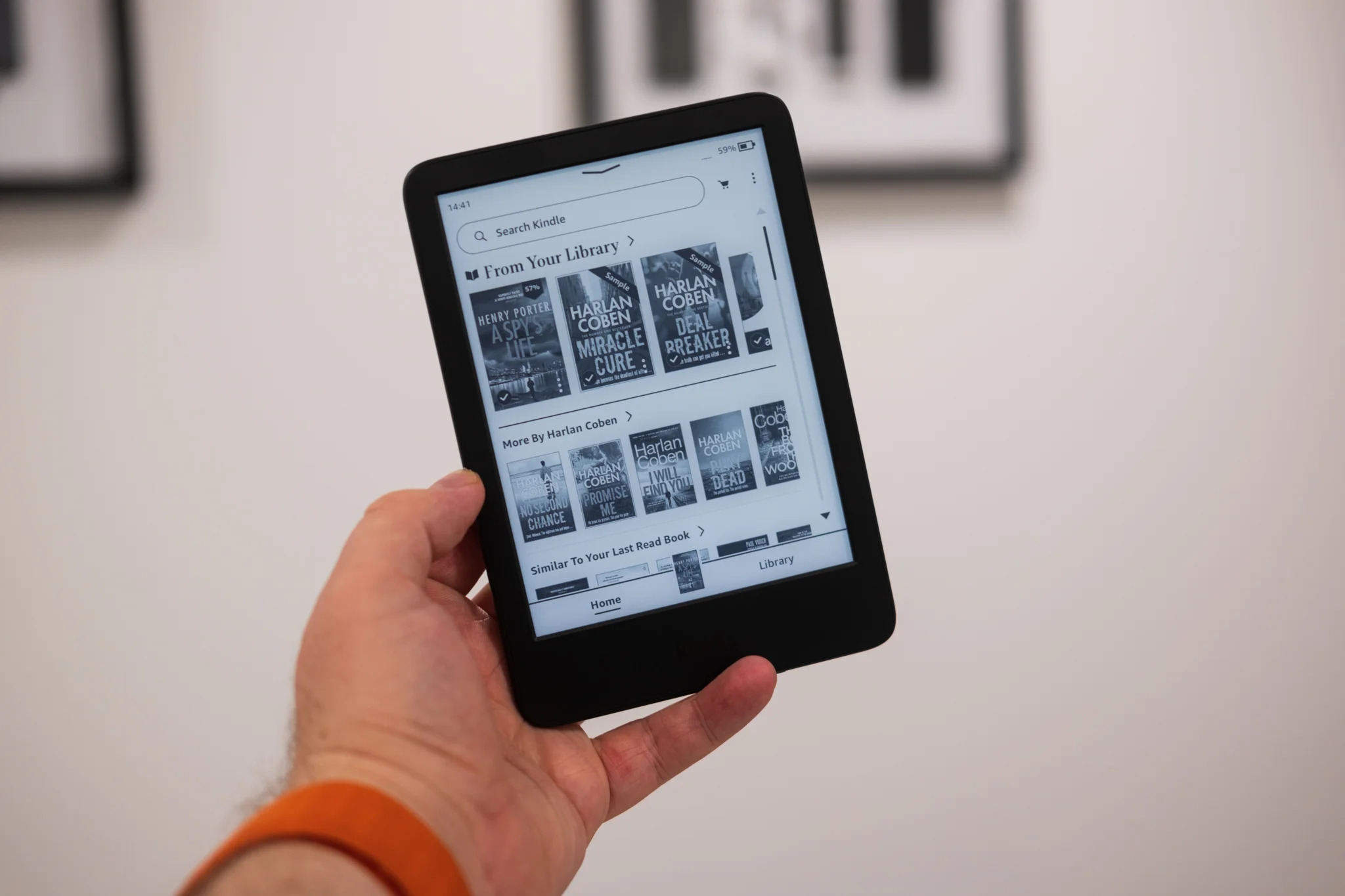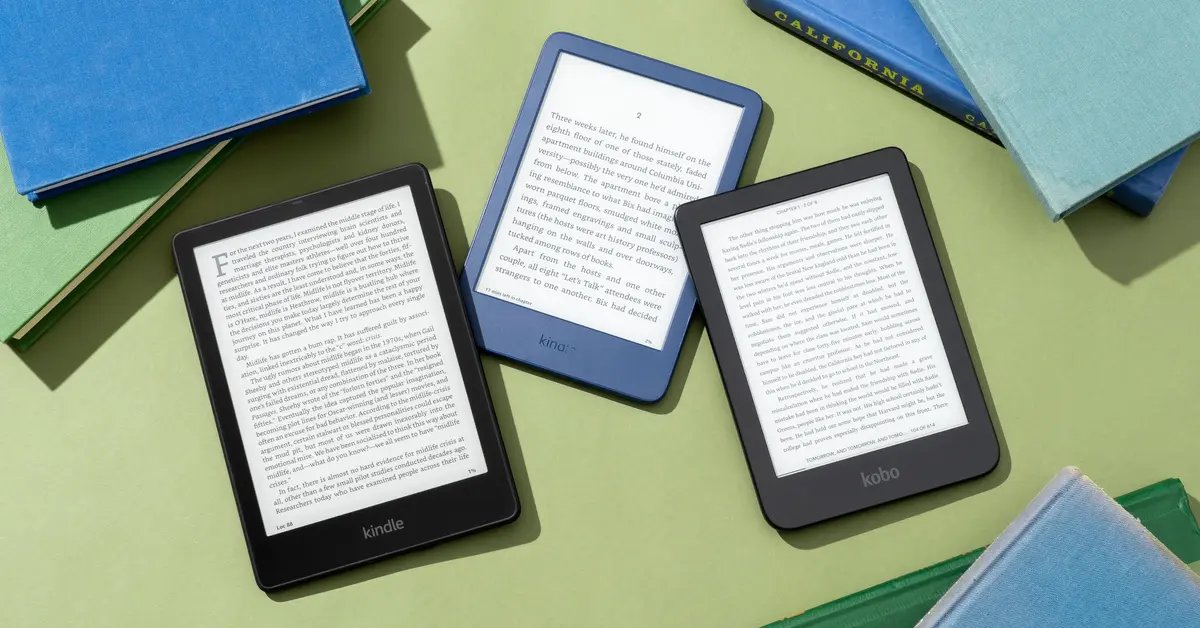Introduction
An ereader, short for electronic reader, is a device designed specifically for reading digital books, also known as ebooks. With the growing popularity of digital reading, ereaders have become a convenient and portable way to carry and access a vast library of books in one device. One of the key considerations for ebook enthusiasts is the compatibility of file formats, as different ereaders support different formats.
EPUB, which stands for Electronic Publication, is one of the most widely used file formats for ebooks. It is an open standard maintained by the International Digital Publishing Forum (IDPF), allowing ebooks to be easily and consistently displayed on different devices and platforms. EPUB offers a range of features that enhance the reading experience, such as adjustable text size, layout customization, and support for multimedia elements.
In this article, we will explore the advantages of EPUB and discuss which ereaders support this popular file format. Whether you are a book lover considering purchasing a new ereader or simply curious about the compatibility of ebook formats, this guide will provide you with the information you need.
What is an Ereader?
An ereader, or electronic reader, is a device designed specifically for reading digital books, also known as ebooks. Unlike traditional books, which are physically printed on paper, ereaders utilize electronic displays to present the text and images of digital publications.
Ereaders are typically lightweight, compact, and equipped with features that enhance the reading experience. They often include features like adjustable font sizes, customizable font styles, and the ability to highlight or annotate text. These devices are also commonly equipped with built-in lighting or anti-glare screens, allowing readers to comfortably enjoy their ebooks in various lighting conditions without straining their eyes.
One of the significant advantages of ereaders is their ability to store and carry a vast library of ebooks in a single device. With an ereader, you can have access to thousands of books, magazines, and documents, all without the need for physical storage space. This makes ereaders especially convenient for travelers or avid readers who want to have a wide selection of reading material at their fingertips.
Moreover, ebook readers can provide a range of accessibility options, allowing individuals with visual impairments to enjoy books effortlessly. They offer features like text-to-speech functionality, adjustable contrast, and compatibility with screen reader software, making reading accessible to a wider audience.
Ereaders also play a significant role in promoting environmental sustainability. By switching to digital books, readers can reduce the production of paper books, which in turn saves trees and reduces waste. Additionally, ebooks eliminate the need for transportation and packaging involved in traditional book distribution, further reducing the carbon footprint associated with book consumption.
In today’s digital age, ereaders have become an essential device for book lovers, students, professionals, and casual readers alike. With their portable and versatile nature, along with the convenience and accessibility they offer, ereaders have revolutionized the way we read and engage with written content.
What is EPUB?
EPUB is a widely used file format for ebooks, standing for Electronic Publication. It is an open standard maintained by the International Digital Publishing Forum (IDPF), designed to enable the creation and distribution of digital publications that are compatible with various devices and platforms.
EPUB files are based on HTML and CSS, making them flexible and responsive to different screen sizes and orientations. This means that ebooks in EPUB format can be easily read on a variety of devices, including ereaders, tablets, smartphones, and computers, without compromising the reading experience.
One of the key advantages of EPUB is its ability to adapt to different reading preferences. Readers can customize the font size, font style, and background color, allowing for a personalized reading experience. EPUB also supports reflowable text, which means that the text can automatically adjust and reflow according to the screen size and orientation, ensuring that the content remains readable and visually appealing.
In addition to text, EPUB supports various multimedia elements, such as images, audio, and video. This enables publishers to incorporate rich media into their ebooks, enhancing the overall reading experience and creating interactive and engaging content.
EPUB files are also designed to be accessible to individuals with visual impairments. They support features like text-to-speech, screen reader compatibility, and the ability to navigate through the content using assistive technology. This ensures that everyone can access and enjoy digital publications in an inclusive manner.
EPUB is a versatile file format that allows for the inclusion of metadata, such as author information, book cover, and table of contents. This makes it easier for readers to navigate through the ebook and for search engines to index and discover the content.
Overall, EPUB has become the standard format for ebooks due to its compatibility, flexibility, and accessibility features. It has revolutionized the publishing industry by providing a consistent and user-friendly format that can be enjoyed on various devices, offering readers a seamless and immersive reading experience.
Advantages of EPUB
EPUB, the Electronic Publication format, offers several advantages that have made it a popular choice for ebooks. Let’s explore some of these advantages below:
- Compatibility: EPUB is compatible with a wide range of devices and platforms, including ereaders, tablets, smartphones, and computers. This means that readers can access their ebooks on their preferred devices without being limited to a specific platform or manufacturer.
- Adaptability: EPUB supports reflowable text, which means that the content can automatically adjust and reflow based on the screen size and orientation. This ensures that readers have a consistent and comfortable reading experience, regardless of the device they are using.
- Customization: EPUB allows readers to customize their reading experience. They can adjust the font size, font style, and background color to suit their preferences. This level of personalization enhances readability and makes reading more enjoyable for individuals with different visual needs.
- Rich Media Support: EPUB supports the inclusion of multimedia elements, such as images, audio, and video. This enables publishers to create interactive and engaging ebooks, bringing the content to life and providing a more immersive reading experience.
- Accessibility: EPUB is designed to be accessible to individuals with disabilities. It supports features like text-to-speech, screen reader compatibility, and the ability to navigate through the content using assistive technology. This ensures that people with visual impairments or other accessibility needs can access and enjoy ebooks in an inclusive manner.
- Metadata: EPUB allows publishers to include metadata within the ebook files. Metadata includes information such as the author’s name, book cover, table of contents, and more. This helps readers navigate through the ebook and provides search engines with relevant information for indexing and discovery.
- Portability: EPUB files are lightweight and easy to transport. Readers can carry hundreds or even thousands of ebooks on a single device, eliminating the need for physical storage space and making it convenient to access their entire library wherever they go.
Overall, the advantages of EPUB make it a versatile and user-friendly format for ebooks. Its compatibility, adaptability, customization options, and support for multimedia elements contribute to an enhanced reading experience for users across different devices and accessibility needs.
Which Ereaders Support EPUB?
EPUB is a widely supported ebook format, and many ereaders on the market are compatible with this format. Here are some popular ereaders that support EPUB:
- Amazon Kindle: While the Kindle primarily uses its own proprietary format (MOBI), it also supports EPUB. However, EPUB files need to be converted to a compatible format using conversion software or online tools before they can be read on a Kindle device.
- Barnes & Noble Nook: Nook ereaders have built-in support for EPUB, making it easy to read EPUB files directly on these devices. Nook devices are known for their compatibility with a variety of ebook formats, including EPUB.
- Kobo eReader: Kobo ereaders are designed to be compatible with EPUB files. They offer seamless integration with EPUB ebooks, allowing users to read their EPUB files directly on Kobo devices without the need for any conversions or additional software.
- Sony Reader: Sony Reader devices are known for their support of multiple ebook formats, including EPUB. These devices offer a user-friendly experience for reading EPUB files, providing readers with a seamless and enjoyable reading experience.
- Other Ereaders: Aside from the mentioned ereaders, there are many other brands and models that support EPUB. Some popular options include PocketBook, Tolino, and Onyx Boox. It’s always a good idea to check the specifications and supported formats of the ereader before making a purchase.
It’s important to note that while an ereader may support EPUB, there might be some variations in features and support capabilities. Some ereaders may offer additional features that enhance the reading experience of EPUB files, such as advanced customization options or compatibility with library borrowing platforms.
Before purchasing an ereader, it’s recommended to research the specific model and verify its compatibility with EPUB files. By choosing an ereader that supports EPUB, you can ensure a seamless and hassle-free reading experience with your collection of EPUB ebooks.
Amazon Kindle
Amazon Kindle is one of the most popular ereader brands globally, known for its extensive library of ebooks and seamless integration with the Amazon ecosystem. While Kindle devices primarily use the proprietary Kindle format (MOBI), certain models also offer limited support for EPUB files.
Kindle ereaders can’t directly open EPUB files as they have their own unique DRM (Digital Rights Management) system and utilize the AZW or KFX file formats. However, there are ways to read EPUB files on a Kindle device. One method is to convert the EPUB files to a compatible format, such as MOBI, using conversion software or online tools. Once the EPUB file is converted, it can be transferred to the Kindle device via USB or email, and then accessed through the Kindle’s library or documents section.
Alternatively, users can also make use of third-party applications like Calibre to assist in converting and managing EPUB files for Kindle. These tools allow for seamless conversion and synchronization of EPUB files to Kindle-compatible formats, ensuring a smooth reading experience.
It’s important to note that while Kindle devices support EPUB through conversion, some features specific to EPUB files like text reflow and resizable text may not be available or optimized on Kindle. Additionally, EPUB books obtained from sources with DRM protection may not be compatible with Kindle devices, even after conversion.
Despite these limitations, Amazon Kindle remains a popular choice among readers due to its extensive ebook marketplace, user-friendly interface, and integration with Amazon’s ecosystem. While EPUB compatibility may require some additional steps, Kindle devices provide a vast selection of ebooks and a comprehensive reading experience.
Barnes & Noble Nook
Barnes & Noble Nook is a line of ereaders that have gained popularity for their dedicated support of EPUB files. The Nook devices are designed specifically for seamless integration with EPUB ebooks, making it effortless for users to read their EPUB files directly on these devices.
The Nook ereaders are known for their user-friendly interface and intuitive reading experience. With built-in support for EPUB, users can easily sideload EPUB files onto their Nook devices via USB or transfer them wirelessly using email or cloud storage services. Once the EPUB files are on the device, they can be accessed and read through the Nook’s library interface.
Barnes & Noble has its own ebook store, where users can purchase and download EPUB ebooks directly onto their Nook devices. With a vast selection of titles available, users have access to a diverse range of reading materials to suit their interests and preferences.
In addition to the standard EPUB format, the Nook devices also support other popular ebook formats such as PDF and TXT, offering users a versatile reading experience. This compatibility with multiple file formats makes the Nook ereaders a convenient choice for readers who have ebooks in various formats.
Furthermore, the Nook ereaders provide features that enhance the reading experience, such as adjustable font size, font style, and margin settings. Users can customize these settings to suit their reading preferences and optimize readability according to their needs.
Overall, Barnes & Noble Nook is a reliable choice for those seeking an ereader that fully supports EPUB files. With its seamless integration, user-friendly interface, and extensive ebook store, the Nook devices provide readers with a convenient and immersive reading experience for their EPUB ebooks.
Kobo eReader
Kobo eReaders are renowned for their dedicated support of EPUB files, making them an excellent choice for readers who primarily read ebooks in this format. Kobo has established itself as a prominent player in the ereader market, known for its user-friendly devices and seamless compatibility with EPUB.
Kobo eReaders come with built-in support for EPUB files, allowing users to easily load and read their EPUB ebooks directly on the device. Users can transfer EPUB files to their Kobo eReader via USB or wirelessly sync their ebook library through cloud storage or the Kobo online store.
With its focus on EPUB compatibility, Kobo provides a seamless reading experience for users. EPUB ebooks are displayed beautifully on the eInk screens of Kobo devices, with adjustable font sizes, font styles, and line spacing options available for enhanced readability. Users also have the flexibility to customize the page layout and margins to suit their personal preferences.
Kobo offers an extensive online store where users can browse and purchase EPUB ebooks in a wide range of genres. The Kobo store provides a diverse selection of titles, ensuring that readers have access to a vast library of books to choose from. It also allows users to synchronize their reading progress and annotations across devices, enabling a seamless transition between reading on a Kobo eReader and the Kobo reading app on smartphones or tablets.
In addition to EPUB, Kobo eReaders also support other commonly used ebook formats such as PDF and MOBI, providing users with flexibility in accessing their ebook library. This compatibility with multiple formats makes Kobo eReaders a versatile option for readers who have ebooks in different file formats.
Another notable feature of Kobo eReaders is their integration with public libraries. Users can borrow EPUB ebooks from participating libraries, directly downloading them onto their Kobo device for a specified lending period. This feature enhances the accessibility and convenience of reading for library patrons.
Overall, Kobo eReaders offer an exceptional reading experience for EPUB enthusiasts. With their dedicated support for EPUB, intuitive interface, and extensive ebook store, Kobo eReaders continue to attract readers who value compatibility, customization, and a wide range of available titles.
Sony Reader
The Sony Reader, known for its sleek design and user-friendly interface, is a popular choice among ebook enthusiasts. Sony Reader devices support multiple ebook formats, including EPUB, making them a reliable option for readers who prefer this format.
Sony Reader devices have native support for EPUB files, allowing users to easily load and read their EPUB ebooks directly on the device. EPUB files can be transferred to the Sony Reader via USB connection or wirelessly downloaded from compatible online stores.
The Sony Reader offers a seamless reading experience for EPUB ebooks, with features that enhance readability and customization. Users can adjust the font size, font style, and line spacing according to their preferences. The Sony Reader also provides options for adjusting the margin size and page layout, ensuring optimal reading comfort for each individual.
In addition to EPUB, Sony Readers are compatible with other popular ebook formats such as PDF and TXT. This compatibility allows users to access a wide range of ebooks and documents beyond EPUB, making the device versatile and accommodating to different reading needs.
One notable feature of Sony Reader devices is the ability to support handwritten annotations and highlighting. Users can use a stylus or their finger to annotate directly on the device’s screen, making it convenient for note-taking or marking important passages while reading EPUB books.
Sony Reader devices also offer seamless integration with public library systems that utilize the OverDrive platform. Readers can borrow EPUB ebooks from participating libraries and easily download them onto their Sony Reader for a specified lending period. This library integration enhances accessibility and allows users to access a wide range of content without the need for physical library visits.
Overall, the Sony Reader provides a reliable and enjoyable reading experience for users who prefer EPUB and other compatible formats. With its support for various file types, customization options, and integration with library systems, the Sony Reader remains a popular choice among readers looking for a versatile and user-friendly ebook device.
Other Ereaders
In addition to the well-known ereaders like Kindle, Nook, Kobo, and Sony Reader, there are several other brands and models that support EPUB files. These ereaders offer a range of features and options for readers seeking compatibility with EPUB and other ebook formats.
One popular option is PocketBook, a brand known for its wide format support and extensive customization options. PocketBook ereaders, such as the PocketBook Touch HD series, offer native support for EPUB and other popular ebook formats. They also provide features like adjustable font sizes, font styles, and margin settings, allowing users to tailor their reading experience to their liking.
Tolino is another brand that has gained popularity, especially in European markets. Tolino ereaders, such as the Tolino Shine series, are known for their seamless integration with EPUB files. They provide an intuitive reading experience and include features like adjustable lighting, high-resolution displays, and compatibility with various ebook formats.
Onyx Boox is a brand that caters to readers seeking advanced features and versatile file format support. Onyx Boox ereaders, such as the Onyx Boox Nova or Note series, support EPUB as well as other ebook formats like PDF, MOBI, and more. They often come with larger screens, stylus support, and enhanced note-taking capabilities, catering to readers who require additional functionalities beyond standard reading.
Other notable brands that provide support for EPUB and offer a range of ereader models include Bookeen, Icarus, and InkBook. These brands combine compatibility with EPUB files along with additional features like adjustable lighting, long battery life, and wireless connectivity.
While the features and functionalities may vary among different brands and models, the common thread is the ability to read EPUB ebooks. These ereaders offer options to adjust settings, access vast ebook catalogs, and provide a comfortable reading experience for users who prefer EPUB format.
When considering ereaders from lesser-known brands, it’s important to research and compare the features, user reviews, and availability of technical support. By doing so, readers can find an ereader that best suits their needs, budget, and preferences for reading EPUB files.
Conclusion
Ereaders have revolutionized the way we read and access digital books, providing a portable and convenient way to carry an entire library in a single device. With the compatibility of different ebook formats playing a crucial role in choosing the right ereader, EPUB has emerged as an important and widely supported format.
EPUB offers several advantages, including its compatibility with various devices and platforms, adaptability to different screen sizes, customization options, support for rich media, and accessibility features. These advantages make EPUB a preferred format for many readers and publishers alike.
When it comes to ereaders that support EPUB, popular brands like Amazon Kindle, Barnes & Noble Nook, Kobo, and Sony Reader offer varying degrees of support and compatibility. While Kindle requires conversion to read EPUB files, Nook and Kobo ereaders have seamless integration with EPUB, making them convenient options. Sony Reader and other lesser-known brands also provide support for EPUB files, catering to readers’ diverse preferences and requirements.
It’s important to carefully consider the features, user-friendliness, and overall reading experience offered by different ereaders before making a decision. Factors like available ebook stores, customization options, note-taking capabilities, and support for other formats may influence the choice of device.
Regardless of the chosen ereader, EPUB provides a versatile and accessible format for enjoying ebooks. It allows for a seamless reading experience, customization to individual preferences, and compatibility with a wide range of digital publications.
Whether you’re an avid reader, a student, a professional, or someone who simply enjoys the convenience of digital books, choosing an ereader that supports EPUB will ensure that you have access to a vast library of ebooks, with the ability to read them comfortably and enjoyably on your preferred device.







